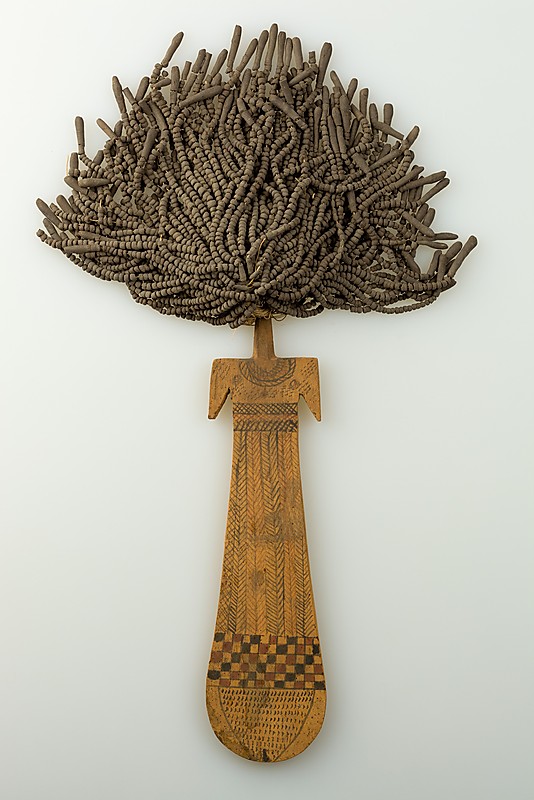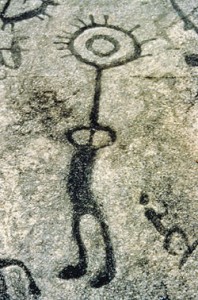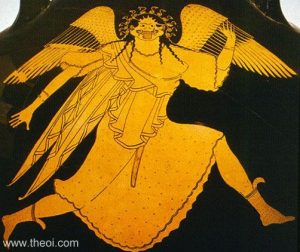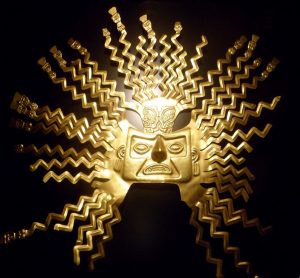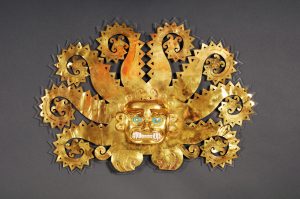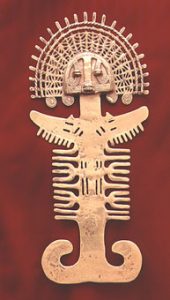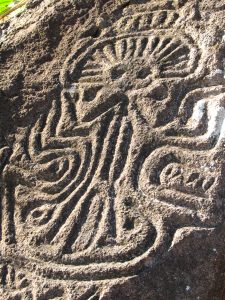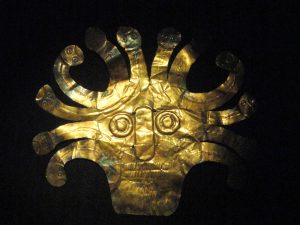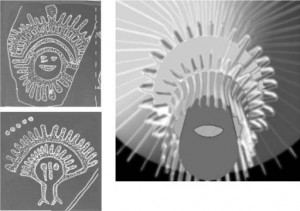Medusa-like so-called paddle doll, Egypt, 2030–1802 B.C.E. OASC The Metropolitan Museum of Art.
- Period:
- Middle Kingdom
- Dynasty:
- Dynasty 11, late-12
- Date:
- ca. 2030–1802 B.C.
- Geography:
- From Egypt, Upper Egypt, Thebes, Asasif, Tomb MMA 816, pit, MMA excavations, 1929–30
- Medium:
- Wood, mud, linen string, paint
- Dimensions:
- Body: H. 22.8 cm (9 in.); W. 7 cm (2 3/4 in.); Th. 0.9 cm (3/8 in.)
- Credit Line:
- Rogers Fund, 1931
- Accession Number:
- 31.3.35a, b
The original description says:
The so-called paddle doll consists of a flat piece of wood depicting the torso, rudimentary arms and neck of a woman, with a thick shock of “hair” made of beads strung on linen thread. The body is often painted with jewelry, textile patterns and/or tattoos. Contrary to their modern name, these “dolls” were not toys. The key-hole shape of the body is similar to the counterpoise of the menat necklaces that were used as percussion instruments during religious ceremonies (see 11.215.450) . When shaken, the beads of the menat necklace would have made a sound intended to appease a god or goddess. The paddle dolls, with their beaded hair, may have served the same purpose. It has been suggested that paddle dolls were an accoutrement of troops of singers and dancers who performed at religious ceremonies associated with the goddess Hathor. Provenance: Museum excavations, 1929-1930. Acquired by the Museum in the division of finds, 1931.
See Patch, Diana Craig 2015. “Paddle Doll.” In Ancient Egypt Transformed: The Middle Kingdom, edited by Adela Oppenheim, Dorothea Arnold, Dieter Arnold, and Kei Yamamoto. New York: Metropolitan Museum of Art, pp. 106–7, no. 47.
Let’s see other “medusas”:

